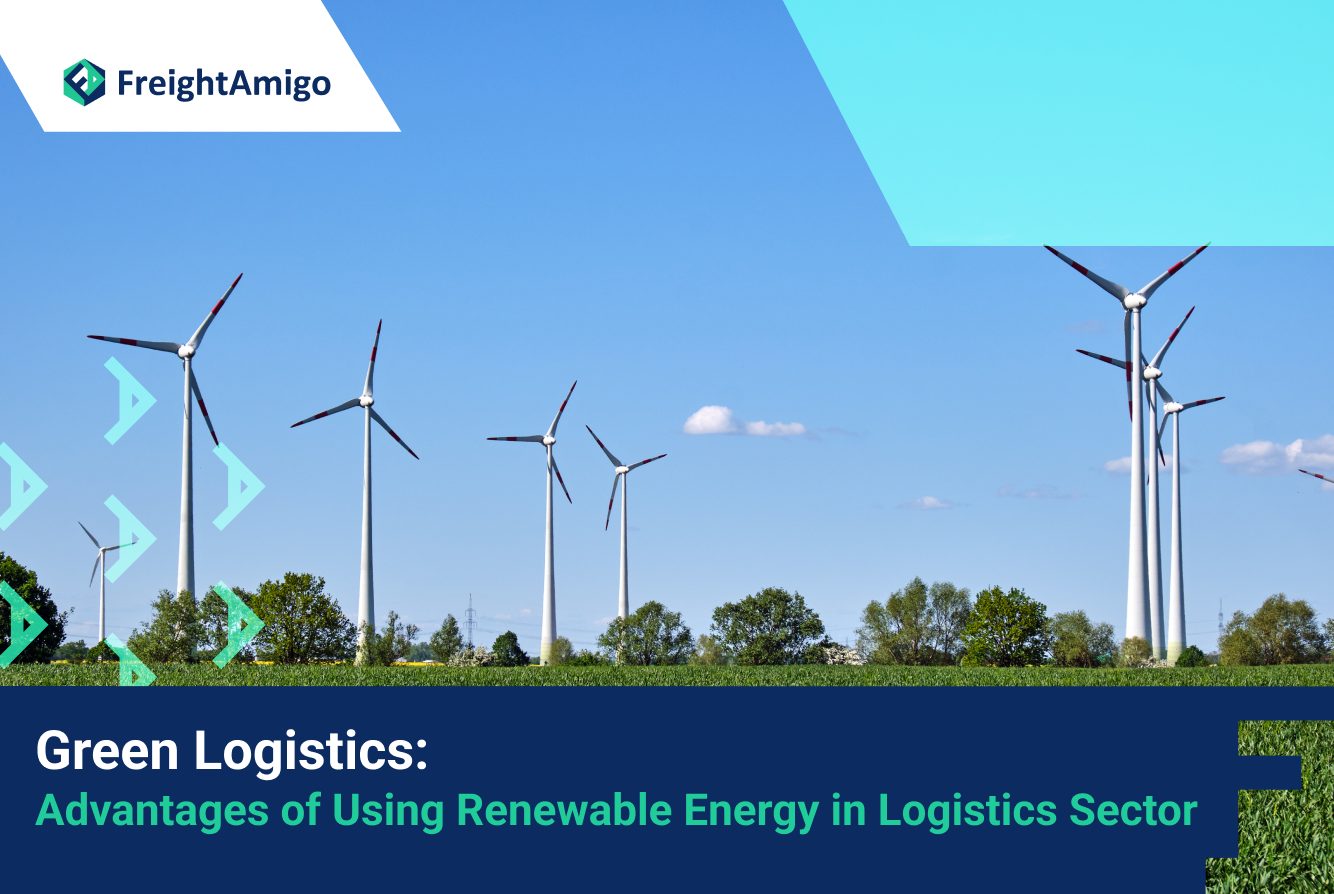Author Name:Tiffany Lee – Marketing Analyst at FreightAmigo
In today’s rapidly changing world, the logistics sector is increasingly recognizing the importance of sustainability and reducing its environmental impact. One of the keyways to achieve this is by embracing renewable energies. Renewable energy sources, such as solar, wind, and hydroelectric power, offer numerous advantages for logistics companies, including reducing carbon emissions, minimizing energy costs, and improving overall operational efficiency. In this article, we will explore the advantages of using renewable energies in the logistics sector.
Want to compare the best Express, Air Freight, Sea Freight, Rail Freight & Trucking rates so as to have better control on cost?
Reducing Carbon Emissions
One of the primary advantages of using renewable energies in warehouses and logistics centers is the significant reduction in carbon emissions. By harnessing renewable energy sources like solar panels or wind turbines, companies can power their facilities with clean energy, thereby minimizing their dependence on fossil fuels. This shift not only helps combat climate change but also improves air quality in surrounding communities.
- Lowering Energy Costs
Renewable energy sources, such as solar and wind power, offer a cost-effective alternative to traditional electricity sources. Once the initial investment is made in installing solar panels or wind turbines, logistics companies can benefit from long-term savings on energy costs. Moreover, some regions offer incentives, such as tax credits or grants, to encourage the adoption of renewable energy, further reducing the financial burden.
- Enhancing Operational Efficiency
Renewable energies can also improve the overall operational efficiency of warehouses and logistics centers. For example, solar panels installed on the roof can generate electricity to power lighting and air conditioning systems, reducing the reliance on the grid. Moreover, excess energy generated can be stored in batteries for later use or even distributed to other parts of the facility or neighboring businesses, creating a more sustainable and interconnected energy ecosystem.
Sustainable Transport and Distribution
Transportation is a crucial component of the logistics sector, and it is responsible for a significant portion of carbon emissions. However, there are sustainable alternatives that can be implemented to reduce the environmental impact of transport and distribution.
- Optimizing Routes and Reducing Trips
Logistics companies can optimize their routes and reduce the number of trips taken, thereby minimizing fuel consumption and carbon emissions. Utilizing advanced route planning software and real-time data, companies can identify the most efficient routes, considering factors such as traffic, road conditions, and delivery schedules.
- Electrification of Vehicle Fleet
Replacing traditional fuel-powered vehicles with electric or hybrid alternatives is another effective way to reduce carbon emissions in transportation. Electric vehicles (EVs) have come a long way in terms of technology and infrastructure support. With advancements in battery technology and the expansion of charging infrastructure, EVs are becoming a viable option for logistics companies looking to embrace sustainable transport solutions.
- Collaborative Partnerships for Charging Infrastructure
The deployment of a robust charging infrastructure is crucial for the widespread adoption of electric vehicles in the logistics sector. Collaborative partnerships between energy companies, logistics companies, and charging station providers can help establish a comprehensive network of charging stations, ensuring EVs have access to reliable and convenient charging facilities.
The Role of Green Hydrogen in Logistics
While electric vehicles are gaining popularity, electric batteries may not be the only solution for the logistics sector. Green hydrogen, produced through renewable energy sources, is emerging as a promising alternative for decarbonizing heavy transport and industrial processes.
Green hydrogen can be stored and distributed as a fuel for vehicles. It can be compressed and stored in tanks or transported in tanker trucks, offering flexibility in its usage. Logistics companies can leverage green hydrogen as a clean fuel to power their vehicles, reducing carbon emissions and contributing to a more sustainable transport system.
FreightAmigo Helps Businesses to Achieve Sustainable Goal
The logistics sector has a crucial role to play in driving sustainability and reducing carbon emissions. Embracing renewable energies in warehouses, logistics centers, and transportation can bring myriad benefits, including lower energy costs, reduced carbon emissions, and improved operational efficiency. Furthermore, the emergence of green hydrogen offers additional opportunities for decarbonizing heavy transport and industrial processes. By partnering with organizations like FreightAmigo, businesses can take advantage of sustainable transport solutions and contribute to a more environmentally friendly logistics sector.
There are different options for cargo transportation. If you want to choose the most convenient and suitable solution, it is best to have the full support of logistics experts! If you are planning to ship goods overseas, please go to the FreightAmigo page for inquiries.
===
Read More:
【Green Logistics】Carbon Reduction Policies Bring Benefits for Industry Sectors
What is Green Logistics and its Strategy?
===
If you have any inquiries on logistics/supply chain, feel free to contact FreightAmigo now:
Chat with us online OR
Phone : +852 28121686
WhatsApp: +852 27467829









































